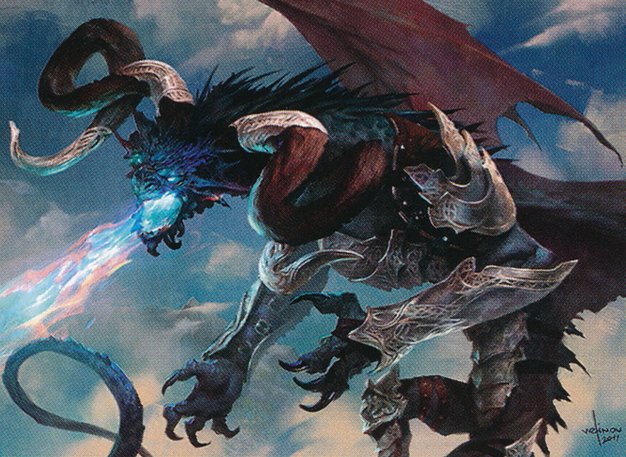Deck & Commander Strategies

Korvold, Fae-Cursed King
This deck is based on sacrifice mechanics to empower Korvold and gain additional benefits.

Maelstrom Wanderer
The Maelstrom Wanderer deck leverages double cascading to quickly deploy a variety of threats.

Satoru Umezawa
This deck revolves around the Ninjutsu mechanic, allowing for unblockable attacks and surprise creature swaps.

Palladia-Mors, the Ruiner
This deck aims to utilize Palladia-Mors' hexproof status by attacking without dealing damage, keeping the hexproof intact.
Gameplay Insights
- 1
Stephen's use of Korvold's sacrifice mechanic to manipulate land cards was a clever way of gaining advantage.
- 2
Corey's use of double cascading with Maelstrom Wanderer was pivotal in deploying threats on the board.
- 3
Jonathan's strategy of using Satoru Umezawa's Ninjutsu mechanic for unblockable attacks was an interesting approach.
- 4
The strategy of attacking without dealing damage with Palladia-Mors to maintain hexproof status was a unique approach that added an extra layer of complexity to the game.
Notable Cards
-

Path of Ancestry
-

Migration Path
-

Dark Ritual
Gameplay Summary
The game kicked off with each player introducing the commanders of their decks: Maelstrom Wanderer, Korvold, Fae-Cursed King, Satoru Umezawa, and Palladia-Mors, the Ruiner.
As the game progressed, each player leaned into their commanders' unique abilities.
Korvold's ability to grow stronger through sacrifice was utilized with land cards being sacrificed for additional benefits.
Maelstrom Wanderer was used to its full advantage through double cascading, allowing more cards to be played.
Satoru Umezawa's deck focused on the Ninjutsu mechanic, aiming to bring out creatures that are hard to block.
Palladia-Mors was used in a clever strategy where the aim was to attack without dealing damage, thus maintaining its hexproof status.









![Commander VS S17E3: Korvold VS Alela VS Chulane VS Syr Gwyn [Brawl] thumbnail](https://i.ytimg.com/vi/Pa8JzkN1leY/sddefault.jpg)
![Commander VS S13E6: ??? vs ??? vs ??? vs ??? [EDH] thumbnail](https://i.ytimg.com/vi/BNrY8YYbS1E/sddefault.jpg)
















![Commander Versus Series: Momir v. Gwafa v. Marrow-Gnawer v. Maelstrom Wanderer [MTG Multiplayer] thumbnail](https://i.ytimg.com/vi/WdlHQqhXgtU/sddefault.jpg)
![Commander Versus Series: Mimeoplasm v. Melek v. Maelstrom Wanderer v. Prossh [MTG Multiplayer] thumbnail](https://i.ytimg.com/vi/H3JROxdcaPo/sddefault.jpg)










